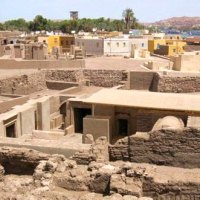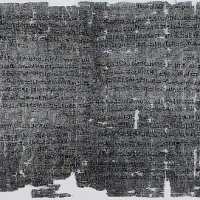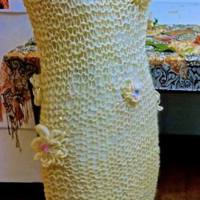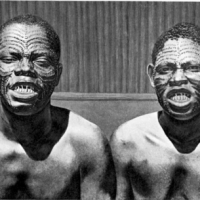Siwa, the Oasis of Jupiter Amon:
Recipes – found at the end of this blog:
- Spice Braised Chicken with Dates and Almonds
- Rice with almonds and dates (Ruz bil-loz wa bil-tamar)
- Brined Fresh Olives
Some of my fondest memories of living and working in Egypt are the times that I traveled to the Oasis of Siwa, in the Libyan/Great Western Desert (near the Libyan border).
Siwa is an extraordinary oasis famous for its olives and its sweet dates, which have been exported to the Nile Valley and beyond for several thousands of years. It is the farthest west that the Macedonian conqueror, Alexander the Great, traveled during his extensive conquests. His trip to Siwa in 330 BC was to visit the renowned Oracle of Jupiter Amon, whose temple remains at Siwa can still be visited today.

Alexander the Great set out from Macedonia, East of Turkey, and conquered all lands from Afghanistan in the East, to Siwa Oasis, in Egypt, to the West.

Remains of the Temple of Jupiter Amon, high above the date and olive orchards. The oracle of the temple was famed throughout the classical world for her ability to foretell the future.
Apparently, the oracle gave good advice, because, after founding the coastal city of Alexandria at the age of 24, he went on to many more successful conquests in the East, before dying at the age of 32. Recent archaeological work suggests his tomb might be located at Siwa Oasis, but this finding is hotly disputed.
[All of my own photos taken during trips to Siwa were lost; many thanks to persons who have supplied replacements]Siwa is located in the great Western Desert of Egypt, 300 kilometers southwest of the Mediterranean, close to the Libyan border. Traveling across the flat plain, one abruptly comes to the edge of an escarpment that drops 60 meters below sea level. There, the oasis can be seen – a sea of date palms, salt lakes and springs. The springs, or artesian wells, are remarkably clear and in most, one can gaze down for many meters.

Siwa is partly surrounded by vast saline lakes, and maintaining their gardens saline-free requires considerable skill, cooperation and manpower.

Siwa’s artesian wells are the source of irrigation water for the intensive cultivation of dates, olives and vegetables.
The up-thrust of the water is so strong that when diving far down into them, one is gently and quickly pushed back up to the top. Water rights to the wells are strictly monitored and controlled, whereby a complex system of time/date controlled use-rights assures that all individual date gardens will regularly receive water. Well-cleaning is jointly organized and the wells are spotless. Each well is named and has its own characteristics – speed of lift, mineral composition, color, etc.

Wells are regularly cleaned – a task that was traditionally organized by oasis elders. Results of excessive soil salinity can be seen in the dead date palms at the back of the picture.
It is thought that the unique and plentiful mineral waters of Siwa, combined with the area’s saline soils, give Siwan dates their delicious taste: sweet, large, meaty and juicy. The fame of these dates can be traced back many centuries in Arabic sources, and have been a major economic mainstay of the inhabitants. Indeed, after eating fresh dates from Siwa, all others seem ‘second class’ at best.

The famed dates of Siwa continue to be shipped throughout the Middle East. The palm frond shown here has Arabic writing on it.
In addition to Siwa’s fame for its dates, olives and the temple of Jupiter Amon, there are several other architectural remains dating back to ancient Egyptian times, as well as two spectacular ancient acropolis on which dwellers lived for centuries, safe from raiding Bedouin tribes that from time to time invaded this rich oasis. It is on the acropolis of Aghurmi, below, that the remains of the Temple of Jupiter Amon, visited by Alexander, can still be seen.

Aghurmi is one of the two acropolis on the Oasis; the Temple of Jupiter Amon is located here. Shali, the second acropolis located at the other end of Siwa, is shown below. These hills were virtual fortifications that for centuries protected inhabitants from raids.

Shali is the larger of the two necropolis, on which some of the ancient homes still remain. It served as a fortress against marauding tribes until modern times.
Siwans are not Arab – but Berber, and speak a dialect of the Berber language. Up until the turn of the 20th Century, the oasis was the last stopping point on the great northern caravan route that began in West Africa. The route was particularly popular with West African Muslims who were making the annual Hajj to Mecca, in Arabia. During caravan stopovers, the considerable riches brought along by these and other caravans were tempting treats for marauding tribes. Now, however, Siwans live primarily in two small villages that are located at each end of the oasis.
Traditional, intricate embroidery and silver jewelry whose designs are unique to Siwa are famous local crafts, with different embroidery designs and kinds of jewelry being appropriate for various ages and ceremonies: childhood; puberty; marriage, etc.

A close-up of the traditional pattern of a women’s dress. The buttons are hand-made of sea shells.
Goats and donkeys are the main livestock, together with chickens. Goat cheese is regularly made, and a typical light meal consists of flat bread, dates, olives, and goat cheese.
Donkeys are extensively used both as a source of manure and for transport. Donkey taxis were, when I first began visiting the oasis, the best means of getting around (there was actually no other means available). Donkeys and goats provide manure for the gardens.

Donkeys continue to play a central role, both in transport of agricultural and other goods as well as taxis.
A unique feature of the oasis, along with all of the others. is the ‘donkey serenade’ that rocks the oasis every morning. Just prior to sunrise, virtually every donkey on the oasis – several thousands – begin braying in unison for about 5 minutes. It’s truly a shattering experience the first time, if unwarned, and certainly nothing to sleep through.
Here is an interesting link on the Berber language of Siwa, thanks to Mike Dunn
http://mideasti.blogspot.com/2011/09/due-to-revolurionary-broadcasts-siwi.html
http://lughat.blogspot.com/2011/08/siwi-and-nafusi-mutually-comprehensible.html
. . . .
Dates and Olives
Dates are the hospitality food of the Middle East and their uses extend from simple snack food through elaborate meat, rice, and bread recipes. At Siwa, they are generally eaten ‘as-is’, fresh, in the morning – or any time of the day, as a snack. But stuffed dates are also favored – especially by popping in a bit of goat cheese.
In the following recipe, dates are added to chicken – this is a North African dish, but comes by way of Egypt:
Spice Braised Chicken with Dates and Almonds
Ingredients:
3 1/2 pounds chicken parts
3 tablespoons flour
2 tablespoons olive oil
1 large onion, halved, and cut into 1/4-inch slices
1 1/2 teaspoons Ground Cinnamon
1 teaspoon Ground Cumin
1/2 teaspoon Ground Ginger
1/2 teaspoon Turmeric
14 – 16 oz. chicken broth
2 tablespoons lemon juice
1/2 teaspoon salt
1 cup pitted and quartered dates, (about 6 ounces)
1/3 cup whole blanched almonds
Method:
1. Coat chicken with flour. Heat oil in a large deep skillet or Dutch oven over medium heat. Add half of the chicken; brown about 5 minutes per side. Remove from skillet. Repeat browning step with remaining chicken, adding onion. Return all chicken to skillet.
2. Combine cinnamon, cumin, ginger, and turmeric in a small bowl; add to chicken. Stir to evenly coat chicken and onions with spices; sauté 1-2 minutes.
3. Stir in broth, lemon juice and salt; bring to a boil over medium heat. Reduce heat to medium-low. Stir in dates and almonds and cook, covered, for 20 minutes. Uncover and simmer another 10 minutes, stirring occasionally.
– Based on a recipe in Egypt Today.
The chicken can be served with the following rice dish that includes a date/raisin/nut condiment:
Ruz bil-loz wa bil-tamar (Rice with almonds and dates)
Ingredients:
1 cup (225 g / 8 oz.) rice
50 g / 2 oz. butter
50 g / 2 oz. almonds, blanched and halved
8 dates, stoned (they should be fresh, but dried ones will do, if plumped)
50 g / 2 oz. sultanas (plumped)
1 tsp. rosewater (but this can be omitted)
Method:
1. While the rice is standing, after cooking, melt the butter in a frying pan. Add the almonds, stirring until they turn golden.
2. Now add the dates and sultanas, and cook, stirring, for a few more minutes.
3. Remove from the stove and mix in the rose-water, if used.
4. Pile the rice on a dish and arrange the mixture on top of it – or, if served with the chicken recipe, as a side dish.
Serves 4-6.
– Based on a recipe by Shiraz
Olives, also a major product of Siwa, are preserved in many different ways. Here is one method that is fairly easy. Throughout the Middle East and North Africa oil is commonly added to olives, together with garlic and other spices. Olives, dates, and dry goat cheese are traditional dessert fare, as well as common foods in villages and cities of the region.
Brined Fresh Olives
Ingredients:
15 lb. fresh green olives, slash on each side
Fresh garlic (10 lg. cloves)
Oregano (see below)
5 c. white vinegar
1 oz. oil to each quart
1 c. pickling and canning salt
(Approximately 1 1/2 pounds to a quart; 7 pounds to 1 gallon.)
Za’atar (a mixed spice used widely in Middle Eastern cooking)
Method:
1. Wash olives and remove stems.
2. Add salt and mix well.
3. Mix periodically for 2-3 days until the olives have changed their color to a khaki-brown shade.
4. Drain liquid, and fill jars or other containers.
5. Add 2 cloves of garlic to each quart, 1 cup of white vinegar, 1 tablespoon of oregano, 1 oz. of oil (in this order).
6. Then fill the remaining space with the brine listed below.
Notes:
They should be ready in about 3 weeks.
When removing them from the brine to serve, add a little zataar [a Middle East Mixed Spice] and a dash of oil to enhance the flavor.
BRINE:
Boil together 4 cups of water with 2/3 cup of salt, let cool, add to jars.
– Based on an anonymous recipe
Related articles
- Green Mint Tea and Beduin Carpets at Mersa Matruh, Egypt (dianabuja.wordpress.com)
- Alexander the Great (cardsmall.wordpress.com)
- The Berber people, known as Amazigh, find rare unity as they form one of the fronts taking on the might of the Gaddafi regime (bigbluerock.wordpress.com)


























Excellent site. A lot of helpful information here. I am sending it to several pals
ans additionally sharing in delicious. And certainly, thanks for your sweat!
LikeLike
Thanks, glad you find it helpful and thanks, too, for sharing!
LikeLike
Reblogged this on Jugraphia Slate.
LikeLike
Merci!
LikeLike
Heya
Your piece The Sweet Dates and Bitter Olives of Siwa Oasis (Libyan Desert) | DIANABUJA’S BLOG is informative & well thought out, I will likely come
back to view your articles..!
LikeLike
Oh, thanks – and hi to you, too!
LikeLike
Thanks for the nice ,and useful post
LikeLike
Most welcomed, DrManal’Heussin!
LikeLike
You’ve done it again! Incredible writing!
LikeLike
If I had a penny for every time I came here! Great writing.
LikeLike
Keep up the good work, bookmarked and referred some friends.
LikeLike
Thanks sonicrafter. I will be doing at least one more blog on Siwa and the Western-Libyan Desert.
LikeLike
Pingback: Cuisine and Crops in Central Africa (and the US) – When is a Garden a Food Garden? « Dianabuja's Blog
Rachel’s comment is actually part of her blog on Gary Nabhan’s book, and related discussion on deserts (link is above). I want to follow up on this with some thoughts of my own. Thanks, Rachel!
LikeLike
Pingback: Two Great Deserts: Sonora and Arabia Deserta | Rachel Laudan